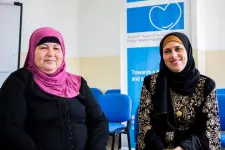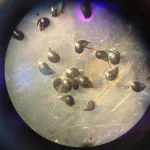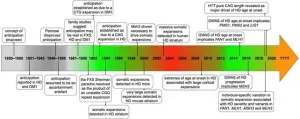(Press-News.org) CHAMPAIGN, Ill. -- People who participated in a health education program that included both mental health and physical health information significantly reduced their risks of cardiovascular disease and other chronic diseases by the end of the 12-month intervention - and sustained most of those improvements six months later, researchers found.
People who participated in the integrated mental and physical health program maintained significant improvements on seven of nine health measures six months after the program's conclusion. These included, on average, a 21% decrease in fasting blood sugar, a 17% decrease in low-density lipoprotein cholesterol and a 12% decrease in their body mass index.
However, patients in the group that focused only on physical health information maintained their improvements on just two risk factors - BMI and systolic blood pressure.
Data collected at the conclusion of the 12-month intervention indicated that patients in the program with the mental health component improved on eight of nine health measures, while their peers in the traditional program improved on just three.
"The gains achieved by patients in the integrated program were greater than those of their counterparts in the other group and had greater lasting effects," said University of Illinois Urbana-Champaign social work professor Tara M. Powell, the first author of a study on the project, published in the journal Preventive Medicine Reports.
Study participants were 213 Syrian refugees and 382 Jordanians who were patients of three health clinics in Irbid, Jordan, a border community that has experienced a large influx of people fleeing the civil war in Syria.
Powell conducted the research in partnership with the health-focused relief and development nonprofit organization Americares and the Royal Health Awareness Society, Jordan.
Powell's group explored the efficacy of a health education intervention called the Healthy Community Clinic, delivered in clinics throughout Jordan to improve patients' management of chronic conditions such as cardiovascular disease and diabetes, and reduce their risks of complications. Trained health educators or nurses led 20 interactive educational sessions that patients attended twice a month for one year.
Patients' outcomes in the traditional HCC program were compared with those of peers who received routine health care only and with a group who participated in an expanded HCC program that integrated four additional sessions focused on mental health.
The mental health sessions included discussions of topics such as grief and physical and emotional traumatic stress reactions. Participants also learned tangible coping skills for reducing emotional distress such as deep-breathing exercises and walking.
"This study is among the first to illustrate how an integrated physical and mental health educational intervention can improve health outcomes and ultimately help reduce cardiovascular disease risk in refugees and low-income populations," said co-principal investigator Dr. Shang-Ju Li, Americares' senior director of monitoring and evaluation. "We are thrilled to share this groundbreaking research and look forward to making even more progress as we continue to look for ways to improve health outcomes for people affected by poverty or disaster."
Additional co-authors of the study were Michelle Thompson, an associate director of emergency response, Americares; sociology graduate student Yuan Hsiao of the University of Washington; Aseel Farraj, a program manager of the Royal Health Awareness Society; Mariam Abdoh, a senior population and health advisor/project management specialist, USAID; and Dr. Rami Farraj, of the King Hussein Medical Center.
Based upon the findings of this research, the Royal Health Awareness Society has since deployed the HCC with the mental health component to public health centers across Jordan, Powell said.
In a prior study with the same participants that examined the impact of social support on mental and physical health, Powell and her colleagues found that more than half of the participants had experienced at least one traumatic event. Among Syrians, the most frequently reported traumatic experience was living in a war zone (73%), while among Jordanians it was witnessing a violent death (18%).
That study, published in PLOS ONE, was co-written by Li, Hsiao and U. of I. graduate student Oe Jin Shin.
"Because mental health conditions such as depression and anxiety often co-occur with chronic physical problems and with poverty, patient education programs that integrate mental and physical health information are critical for countries such as Jordan," Powell said. "Making these integrated programs widely available can reduce the burden of noncommunicable diseases on marginalized populations and increase their access to care."
INFORMATION:
New research shows that biodiversity is important not just at the traditional scale of short-term plot experiments--in which ecologists monitor the health of a single meadow, forest grove, or pond after manipulating its species counts--but when measured over decades and across regional landscapes as well. The findings can help guide conservation planning and enhance efforts to make human communities more sustainable.
Published in a recent issue of Frontiers in Ecology and the Environment, the multi-institutional study was led by Dr. Christopher Patrick ...
STEMOs (Stroke-Einsatz-Mobile) have been serving Berlin for ten years. The specialized stroke emergency response vehicles allow physicians to start treating stroke patients before they reach hospital. For the first time, a team of researchers from Charité - Universitätsmedizin Berlin has been able to show that the dispatch of mobile stroke units is linked to improved clinical outcomes. The researchers' findings, which show that patients for whom STEMOs were dispatched were more likely to survive without long-term disability, have been published in JAMA*.
The phrase 'time is brain' emphasizes a fundamental principle from emergency medicine, namely that after stroke, every minute counts. Without ...
With the help of the international Gemini Observatory, a Program of NSF's NOIRLab, and other ground-based telescopes, astronomers have confirmed that a faint object discovered in 2018 and nicknamed "Farfarout" is indeed the most distant object yet found in our Solar System. The object has just received its designation from the International Astronomical Union.
Farfarout was first spotted in January 2018 by the Subaru Telescope, located on Maunakea in Hawai'i. Its discoverers could tell it was very far away, but they weren't sure exactly how far. They needed more observations.
"At that time we did not know the object's orbit as we only had the Subaru discovery observations over 24 hours, but it takes years of ...
A report summary released today by a team at Lehigh University led by Thomas McAndrew , a computational scientist and assistant professor in Lehigh's College of Health, shares the consensus results of experts in the modeling of infectious disease when asked to rank the top 5 most effective interventions to mitigate the spread and impact of COVID-19 in the U.S.
The report is part of an ongoing meta forecasting project aimed at translating forecasting and real world experience into actions.
McAndrew and his colleagues wanted to answer "Here is where ...
Wilmington, DE, Feb. 11, 2020 -Scientists have developed an affordable, downloadable app that scans for potential unintended mistakes when CRISPR is used to repair mutations that cause disease. The app reveals potentially risky DNA alterations that could impede efforts to safely use CRISPR to correct mutations in conditions like sickle cell disease and cystic fibrosis. The development of the new tool, called DECODR (which stands for Deconvolution of Complex DNA Repair), was reported today in The CRISPR Journal by researchers from ChristianaCare's Gene Editing Institute.
"Our research has shown that when CRISPR is used to repair a gene, it also can introduce a variety of subtle changes to DNA near the site of the repair," said Eric ...
Amsterdam, February 11, 2021 - Recent genetic data from patients with Huntington's disease (HD) show that DNA repair is an important factor that determines how early or late the disease occurs in individuals who carry the expanded CAG repeat in the HTT gene that causes HD. The processes of DNA repair further expand the CAG repeats in HTT in the brain implicated in pathogenesis and disease progression. This special issue of the Journal of Huntington's Disease (JHD) is a compendium of new reviews on topics ranging from the discovery of somatic CAG repeat expansion in HD, to our current understanding of the molecular mechanisms involved ...
In the last 25 years, scientists have discovered over 4000 planets beyond the borders of our solar system. From relatively small rock and water worlds to blisteringly hot gas giants, the planets display a remarkable variety. This variety is not unexpected. The sophisticated computer models, with which scientists study the formation of planets, also spawn very different planets. What the models have more difficulty to explain is the observed mass distribution of the planets discovered around other stars. The majority have fallen into the intermediate mass category - planets with masses of several Earth masses to around that of Neptune. Even in ...
LAWRENCE -- Nearly every fall, as football teams return to the field, tragic stories of players falling ill and even dying of heat trauma make the headlines. What many don't consider is that marching band members -- who don heavy uniforms and perform in the same sweltering temperatures -- may also be at risk.
A study led by the University of Kansas has measured core temperatures, hydration and sweat levels of marching band members and found that they are very much at risk and deserve access to athletic trainers for their safety -- just as players do.
The study used high tech methods to gauge band members' body core ...
A study led by researchers at Baylor College of Medicine reveals a novel role of the steroid receptor coactivator 3 (SRC-3/NCOA3), a protein crucial for steroid hormone function and a prognostic marker for aggressive human breast and other cancers.
The team discovered that SRC-3 also regulates human immune T regulatory cells (Tregs), which contribute to the regulation of the body's immunological activity by suppressing the function of other immune cells, including those involved in fighting cancer. The study, which appears in the journal Scientific Reports, shows that Tregs whose SRC-3 function was eliminated failed to suppress the activity of other immune cells in the lab. The authors anticipate that their findings ...
The golden-mantled ground squirrel (Callospermophilus lateralis) is a popular sight among tourists in the Rocky Mountains--the small rodent is a photogenic creature with a striped back and pudgy cheeks that store seeds and other food.
But there's a reality that Instagram photos don't capture, said Christy McCain, an ecologist at the University of Colorado Boulder. In a new study spanning nearly 13 years, she and her colleagues discovered that the ground squirrel has joined many other small mammals in Colorado's Rocky Mountains that are making an ominous trek: They're climbing uphill to avoid warming temperatures in the state brought on by climate change.
"It's frightening," ...






